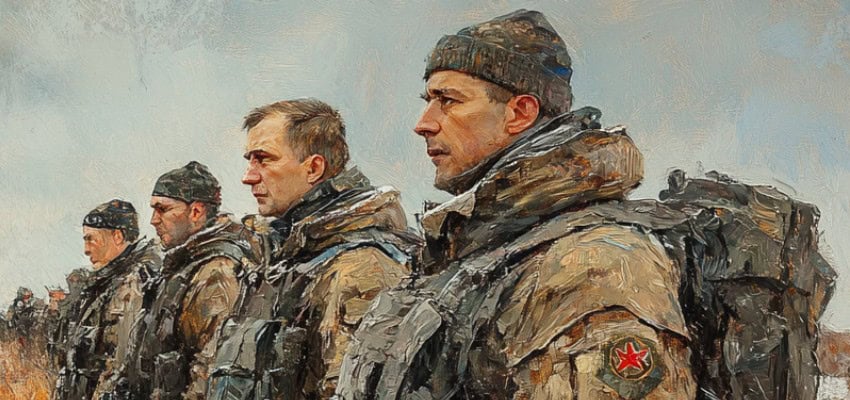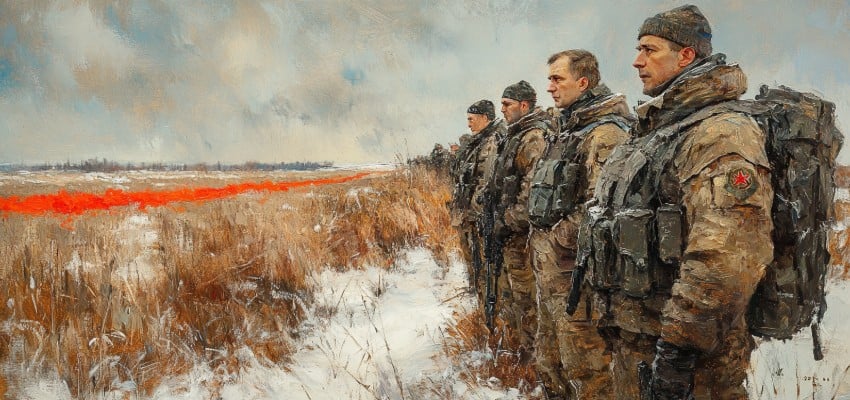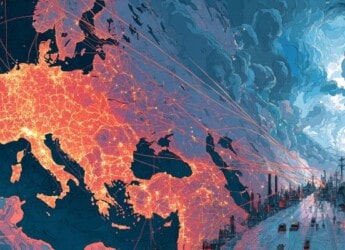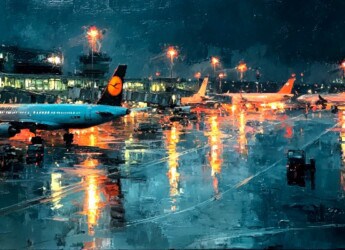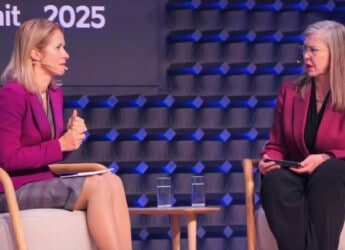Editor’s Note: This article is based on the May 23, 2025, Russian Offensive Campaign Assessment by the Institute for the Study of War and offers an integrated examination of key developments across military, diplomatic, and domestic fronts in the ongoing Russo-Ukrainian conflict. At the forefront of the assessment is Russian Foreign Minister Sergei Lavrov’s declaration that any future peace settlement must prevent Ukraine from ever electing a pro-Western government—a stark articulation of Moscow’s red line and a de facto demand for regime change. This strategic posture frames the broader narrative, which includes Ukraine’s battlefield gains near Toretsk, Russia’s advances in Donetsk Oblast, the confirmed execution of Ukrainian prisoners of war, and intensifying Ukrainian drone strikes within Russian territory. The analysis also delves into President Vladimir Putin’s approval of a migrant tracking system designed to serve both internal control and military mobilization objectives. Together, these elements underscore the hybrid and escalating character of the war, where diplomatic ultimatums, battlefield attrition, and authoritarian domestic policy converge.
For those seeking to grasp the full scope of this evolving landscape, the complete updates from the Institute for the Study of War serve as an invaluable resource.
Content Assessment: Lavrov’s Line in the Sand: Why Russia’s Demands Signal a Long War in Ukraine
Information - 92%
Insight - 92%
Relevance - 90%
Objectivity - 94%
Authority - 95%
93%
Excellent
A short percentage-based assessment of the qualitative benefit expressed as a percentage of positive reception of the recent article from ComplexDiscovery OÜ titled, "Lavrov’s Line in the Sand: Why Russia’s Demands Signal a Long War in Ukraine."
Background Note: ComplexDiscovery’s staff offers distinctive perspectives on the Russo-Ukrainian war and Middle Eastern conflicts, informed by military experience on the West German, East German, and Czechoslovakian border during the Cold War and in Sinai as part of Camp David Accord compliance activities. This firsthand regional knowledge has been further enhanced by recent staff travels to Eastern European countries, including Estonia, Finland, Latvia, Lithuania, and Poland. These visits have provided up-to-date, on-the-ground insights into the current geopolitical climate in regions directly impacted by the ongoing conflict.
Combined with cybersecurity, information governance, and eDiscovery proficiency, this multifaceted experience enables comprehensive analysis of these conflicts, including the critical impact of cyber warfare, disinformation, and digital forensics on modern military engagements. This unique background positions ComplexDiscovery to provide valuable insights for conflict-related investigations and litigation, where understanding the interplay of technology, data, and geopolitical factors is crucial.
Russo-Ukrainian Conflict Update*
Lavrov’s Line in the Sand: Why Russia’s Demands Signal a Long War in Ukraine
ComplexDiscovery Staff
As of late May 2025, the Russian offensive campaign in Ukraine has intensified across multiple domains—diplomatic, military, and internal governance—highlighting the Kremlin’s multi-layered strategy to sustain pressure on Kyiv and reshape the post-2014 European order.
At the diplomatic forefront, Russian Foreign Minister Sergei Lavrov explicitly demanded that any future peace agreement with Ukraine include conditions preventing the formation of pro-Western governments. This condition, cloaked in references to Ukraine’s 2014 Revolution of Dignity, reflects Russia’s enduring insistence on regime change. Lavrov also reiterated the Kremlin’s narrative that President Volodymyr Zelensky is not a legitimate leader due to postponed elections in 2024—a position that misinterprets the Ukrainian Constitution, which prohibits elections during martial law. Russia’s framing of Ukraine’s 2014 Revolution of Dignity as a Western-backed coup remains central to its narrative strategy. By misrepresenting the constitutional basis for postponed elections under martial law, Russian officials aim to delegitimize Ukraine’s entire post-2014 political structure, reinforcing their claim that no negotiations with Zelensky—or any future pro-Western leadership—can be seen as binding. This provides Moscow with a flexible pretext to reject diplomatic overtures or agreements as politically void.
Meanwhile, on the humanitarian front, Ukraine and Russia conducted a significant prisoner-of-war (POW) and civilian exchange, with each side releasing 390 individuals in the first phase of a 1,000-for-1,000 agreement brokered in Istanbul. This exchange underscores rare operational coordination amid widespread hostilities, although it is overshadowed by ongoing violations of international law. The Donetsk Oblast Prosecutor’s Office confirmed an investigation into the execution of two disarmed Ukrainian soldiers by Russian forces near Udachne on May 22. Such acts form part of a broader and increasingly well-documented pattern of extrajudicial killings, reinforcing ISW’s assessment that Russian command structures are either directly enabling or condoning these war crimes.
On the battlefield, the front lines remain active and contested. Ukrainian forces made tactical gains near Toretsk in Donetsk Oblast, while Russian troops achieved limited advances near Novopavlivka and Kurakhove. In particular, Russian forces captured the village of Odradne, as confirmed by geolocated footage. These shifts reflect a war of attrition in which territorial control is often transient, shaped more by destruction and depletion than decisive strategic breakthroughs.
Drone warfare remains a central pillar of Ukraine’s asymmetric strategy. On May 22–23, Ukrainian forces targeted the Energiya industrial enterprise in Lipetsk Oblast, a facility producing components for Russian drones, electronic warfare systems, and missile technologies. Additional attacks were carried out against infrastructure in Ryazan and near the Patriot Expo Center in Moscow Oblast. These strikes not only degrade Russia’s military supply chains but also signal Ukraine’s expanding operational reach. The Russian Ministry of Defense claimed to intercept dozens of drones, yet the successful strikes highlight vulnerabilities even within Russia’s rear areas.
In response to growing internal pressures and continued military mobilization demands, Russian President Vladimir Putin signed a law approving a pilot surveillance application for migrants in Moscow City and Oblast. The program, beginning September 1, 2025, mandates location-sharing via mobile devices and empowers authorities to deport individuals who fail to comply. While presented as a pilot in Moscow, the program is structured for potential nationwide expansion. It mandates digital registration and constant location sharing for selected migrant groups, under threat of deportation for noncompliance. This surveillance framework echoes the Kremlin’s broader authoritarian model, blending national security rhetoric with coercive control mechanisms that may be adapted for broader civic monitoring beyond the migrant population.
Operationally, Russian forces are pressing in Luhansk and Kharkiv Oblasts, with ongoing attempts to establish pontoon bridges across the Oskil River to facilitate deeper advances. In Donetsk Oblast, Russian troops launched intensified assaults in areas around Siversk, Chasiv Yar, Pokrovsk, and Velyka Novosilka. A notable element of Russian tactics in these areas is the use of light vehicles—motorcycles, civilian cars, and buggies—for infantry transport, reflecting equipment shortages and increased reliance on improvisation. Ukrainian defenses remain active, with confirmed counterattacks in multiple sectors.
In southern Ukraine, including Zaporizhia and Kherson Oblasts, Russian forces maintained offensive pressure without making significant gains. However, air strikes remain deadly and disruptive. On May 22–23, Russia launched a wave of Shahed drones and Iskander missiles across central and western Ukraine. One such attack targeted port infrastructure in Odesa, killing a civilian and injuring several others, underlining the indiscriminate nature of Russian long-range strikes.
Lavrov’s dismissal of a Vatican-hosted negotiation, proposed by former U.S. President Donald Trump, as “unrealistic” for two Orthodox nations further emphasizes Russia’s rejection of neutral mediation. This reinforces Moscow’s preference for frameworks where it can control the diplomatic narrative or leverage imbalance to its advantage.
In sum, the ongoing conflict continues to exhibit traits of entrenched hybrid warfare, in which kinetic operations, information control, diplomatic maneuvering, and domestic surveillance systems are increasingly intertwined. Russia’s strategic posture signals not only a refusal to compromise militarily but also a determination to delegitimize Ukraine’s sovereign political identity and repurpose its own internal tools of governance toward wartime utility.
As battlefield attrition escalates and diplomatic channels constrict, the crucial question remains: how will the growing integration of domestic authoritarianism, military aggression, and diplomatic inflexibility shape the long-term architecture of post-war Eastern Europe?
Detailed Reporting with Maps for May 23, 2025, from the ISW – Mouseover to Scroll
Russo-Ukrainian War - May 23 2025-UpdateReview the Detailed Reporting and Maps PDF
About the Institute for the Study of War Research Methodology
ISW’s research methodology relies on both primary and secondary sources, enabling researchers to develop a comprehensive understanding of the situation on the ground. In order to analyze military and political developments in any given area, ISW’s research analysts must wholly understand the systems of enemy and friendly forces. They must also understand the population demographics, physical terrain, politics, and history of that area. This lays the analytical foundation for understanding the reasons for particular developments and fulfilling their assigned research objectives. ISW analysts also spend time in places like Iraq, Afghanistan, and elsewhere in order to gain a better understanding of the security and political situation and to evaluate the implementation of current strategies and policies. Their researchers compile data and analyze trends, producing a granular analysis of developments in areas of research, producing an accurate, high-resolution, timely, and thorough picture of the situation. ISW’s research methodology guarantees its success and commitment to improving the nation’s ability to execute military operations, achieve strategic objectives, and respond to emerging problems that may require the use of American military power.
About the Institute for the Study of War
The Institute for the Study of War advances an informed understanding of military affairs through reliable research, trusted analysis, and innovative education. They are committed to improving the nation’s ability to execute military operations and respond to emerging threats in order to achieve U.S. strategic objectives. ISW is a non-partisan, non-profit, public policy research organization.
Learn more, get involved, and contribute today.
Assisted by GAI and LLM Technologies
* Sourced and shared with direct expressed permission from the Institute for the Study of War (ISW).
Additional Reading
- From Dissent to OSINT? Understanding, Influencing, and Protecting Roles, Reputation, and Revenue
- Data Embassies: Sovereignty, Security, and Continuity for Nation-States
Source: ComplexDiscovery OÜ
